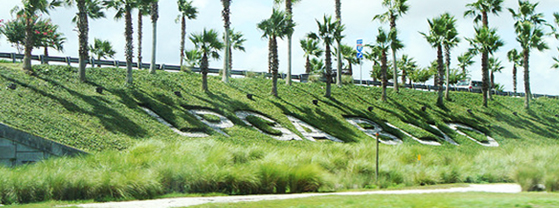Imagine waking up to a serene and beautifully landscaped garden right outside your window, a place of solace and wonder where you can escape the demands of daily life. The allure of a picturesque landscape is undeniable, but the prospect of endless maintenance and upkeep can be daunting. That’s where the magic of a low-maintenance landscape comes into play. In this guide, we’ll embark on a journey through the world of residential landscape maintenance, exploring the art of creating a low-maintenance landscape that allows you to savor the beauty without the constant toil. Join us on this voyage as we unlock the secrets, share expert insights, and introduce you to the commitment of C&L Landscape in helping you achieve a garden that thrives effortlessly. The Vision of a Low-Maintenance Landscape
Before we dig into the practicalities, let’s start with your vision. Close your eyes and imagine your dream garden—a space to relax, entertain, and connect with nature. This vision is the driving force behind creating a low-maintenance landscape.
The Foundations of Low Maintenance
Creating a low-maintenance landscape begins with careful planning and selecting the correct elements that minimize upkeep. Let’s delve into the fundamental building blocks:
a. The Right Plant Selection
The choice of plants is pivotal. Opt for native or drought-tolerant species that thrive in your climate and soil conditions. These plants require less water, fewer pesticides, and minimal pruning.
b. Smart Design
Consider the layout and design of your garden. Embrace simplicity and functionality. Use mulch, rocks, or ground covers to reduce the need for frequent weeding and mowing.
c. Efficient Irrigation
Install an intelligent irrigation system that waters your plants precisely when needed. Drip irrigation and soaker hoses are excellent for conserving water and minimizing maintenance.
The Art of Garden Planning
Creating a low-maintenance landscape requires thoughtful planning. Start by analyzing your outdoor space and envisioning the final result.
a. Assess Your Space
Take stock of your outdoor area. Note the soil type, sunlight patterns, and existing plants or structures. This assessment will guide your plant selection and layout.
b. Define Your Goals
Determine your garden’s purpose. Are you looking for a space for relaxation, entertainment, or wildlife attraction? Clearly defining your goals will help shape the design.
c. Create Zones
Designate specific zones in your garden for different functions, such as a seating area, a play area for children, or a vegetable garden. This segmentation streamlines maintenance and makes the garden more enjoyable.
The Right Plant Selection
Plant selection is the cornerstone of a low-maintenance landscape. Choosing the right plants for your climate and soil conditions is crucial.
a. Native Plants
Native plants are well-suited to your local environment, making them naturally low-maintenance. They require less water and are more resistant to pests and diseases.
b. Drought-Tolerant Plants
Incorporate drought-tolerant plants that can thrive with minimal watering. Succulents, ornamental grasses, and Mediterranean herbs are excellent choices.
c. Ground Covers
Ground covers, like creeping thyme or low-growing sedums, suppress weeds and add visual interest to your landscape.
d. Slow-Growing Trees and Shrubs
Choose trees and shrubs that grow slowly, reducing the need for frequent pruning and maintenance.
A Canvas of Effortless Beauty
Your garden’s layout and design significantly affect its maintenance requirements.
a. Mulch Magic
Applying a layer of mulch around plants and in garden beds helps retain moisture, suppress weeds, and maintain a neat appearance.
b. Rock Gardens
Rock gardens or dry riverbeds can add texture and visual interest to your landscape while minimizing maintenance.
c. Permeable Surfaces
Consider using permeable pavers or gravel paths. They reduce water runoff, prevent erosion, and minimize weed growth.
Efficient Irrigation
A well-designed irrigation system ensures your plants receive the right amount of water without waste.
a. Drip Irrigation
Drip irrigation delivers water directly to the plant’s root zone, reducing evaporation and waste.
b. Soaker Hoses
Soaker hoses emit water along their length, providing gradual and consistent moisture to the soil.
c. Smart Timers
Install intelligent irrigation timers that adjust watering schedules based on weather conditions, preventing overwatering.
The Role of Hardscaping
Integrate hardscaping elements like patios, decks, or paths into your landscape. These features not only enhance aesthetics but also reduce the area requiring residential landscape maintenance. a. Patios and Decks
Create outdoor living spaces that require minimal upkeep. These areas are perfect for relaxation and entertainment.
b. Pathways
Install pathways made of gravel, stepping stones, or permeable pavers. They guide movement in your garden while reducing the need for lawn care.
The Expertise of C&L Landscape
At C&L Landscape, we understand the art of creating low-maintenance landscapes. Here’s how our expertise can transform your vision into reality:
a. Customized Solutions
We work closely with you to design a landscape that matches your aesthetic preferences, lifestyle, and maintenance expectations.
b. Quality Materials
We source top-quality materials to ensure your garden’s longevity and resilience.
c. Skilled Craftsmanship
Our team of skilled professionals brings your landscape design to life with precision and attention to detail.
d. Sustainable Practices
We prioritize eco-friendly and sustainable landscaping practices, including water-efficient irrigation and native and drought-tolerant plants. The Art of Maintenance
Even low-maintenance landscapes require some care. Here are some tips to keep your garden looking its best with minimal effort:
a. Regular Inspections
Inspect your garden for signs of pests, diseases, or commercial landscape maintenance needs. Catching issues early can prevent more significant problems down the road. b. Pruning and Trimming
Prune and trim plants as needed to maintain their shape and size. Slow-growing plants will require less frequent attention.
c. Mulch Refresh
Replenish mulch as it decomposes to continue providing weed suppression and moisture retention.
d. Smart Watering
Adjust your irrigation system seasonally to meet the changing needs of your plants.
Conclusion:
Residential landscape maintenance is a journey of art and science, where vision meets practicality. With careful planning, proper plant selection, efficient irrigation, and the expertise of C&L Landscape, you can turn your garden into an oasis of effortless beauty. Imagine spending more time enjoying your outdoor space and less time toiling in it. Contact us today to embark on the path to a low-maintenance landscape that brings your vision to life, allowing you to savor the beauty of your garden without the constant upkeep. 


